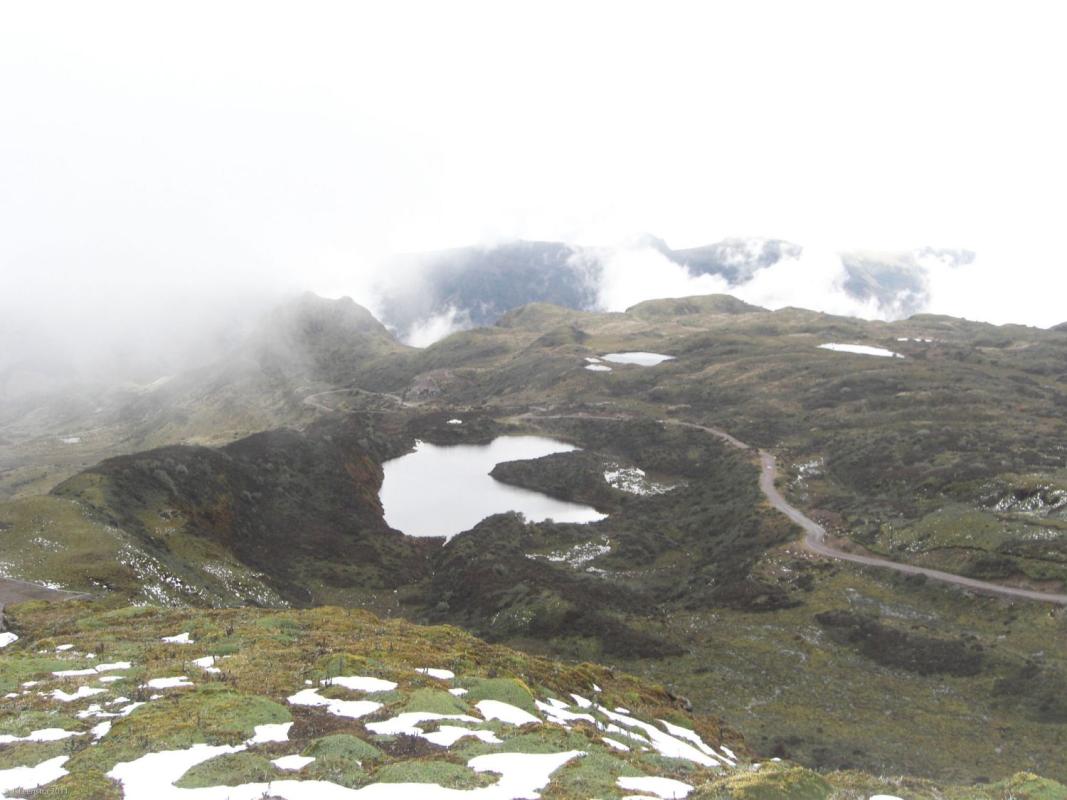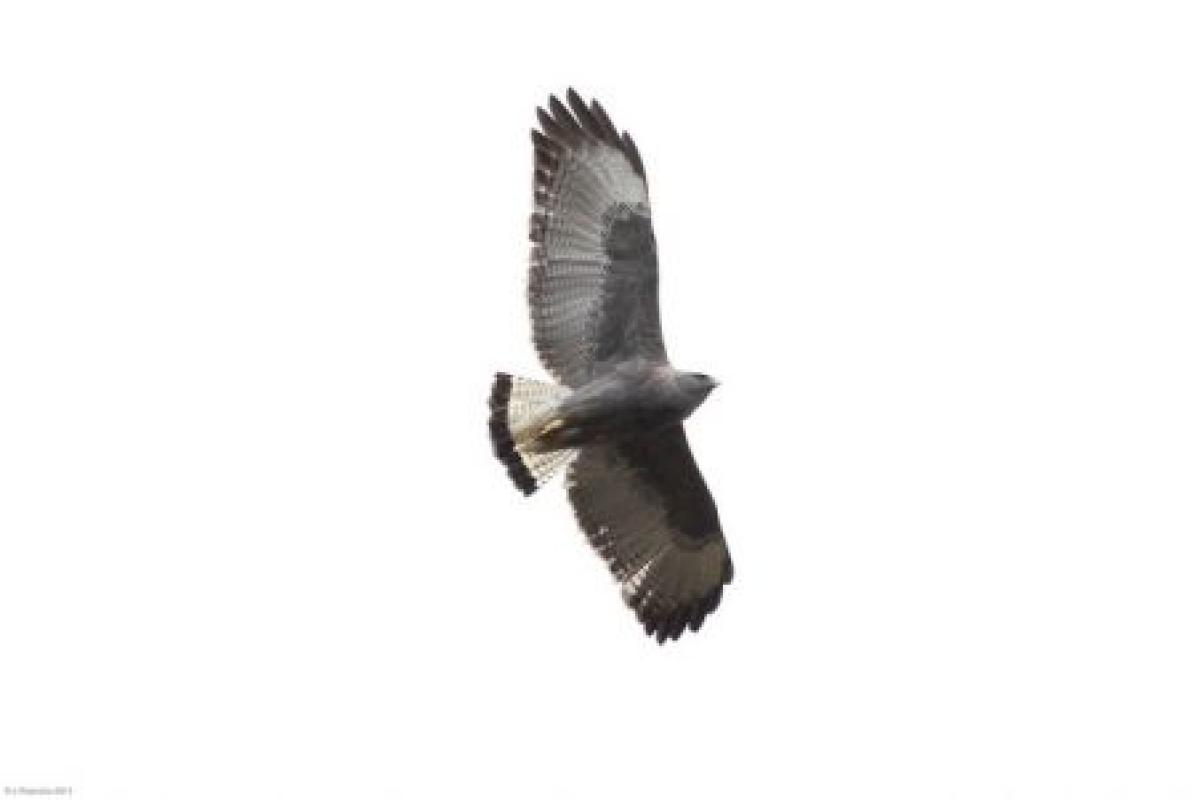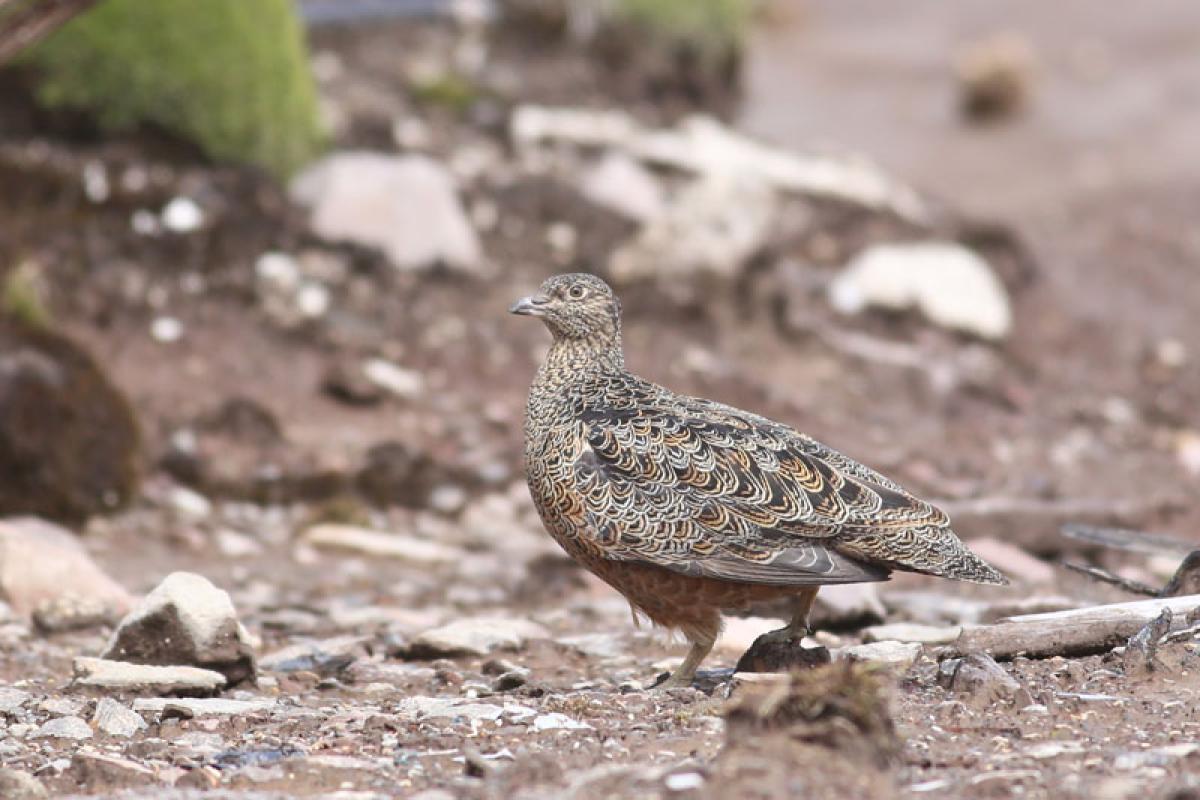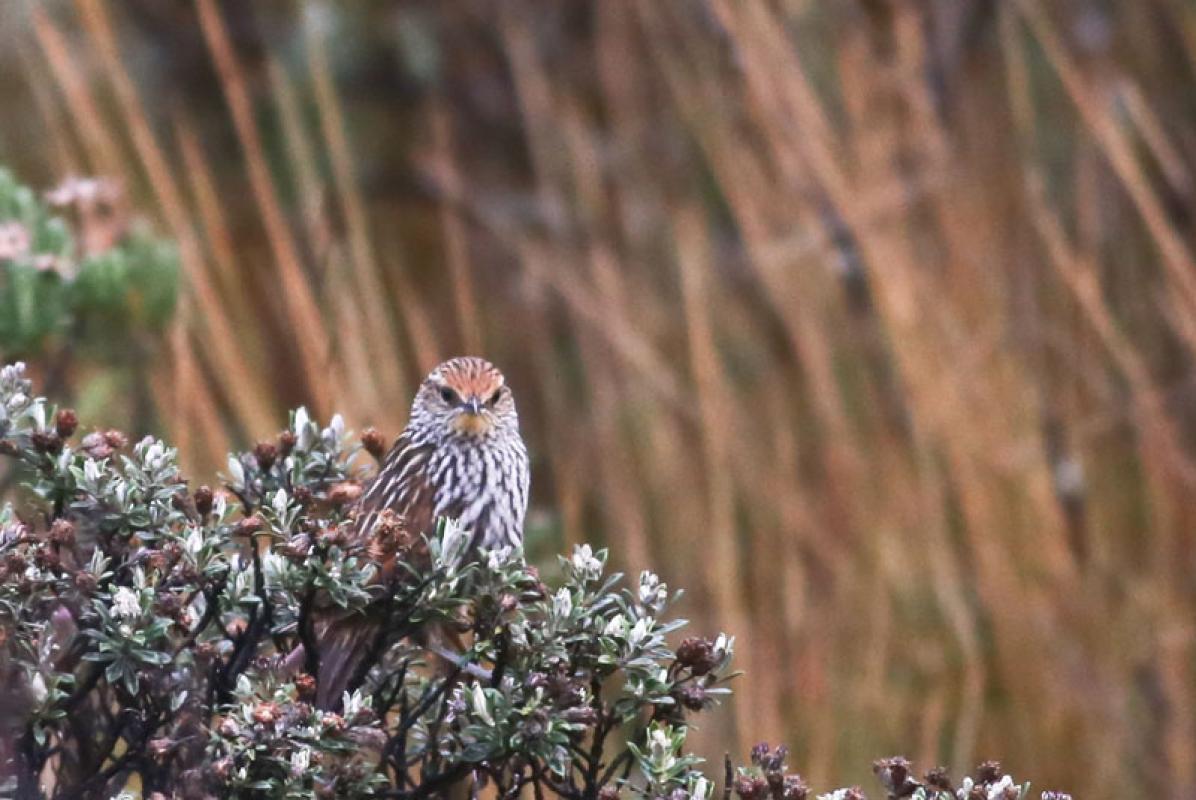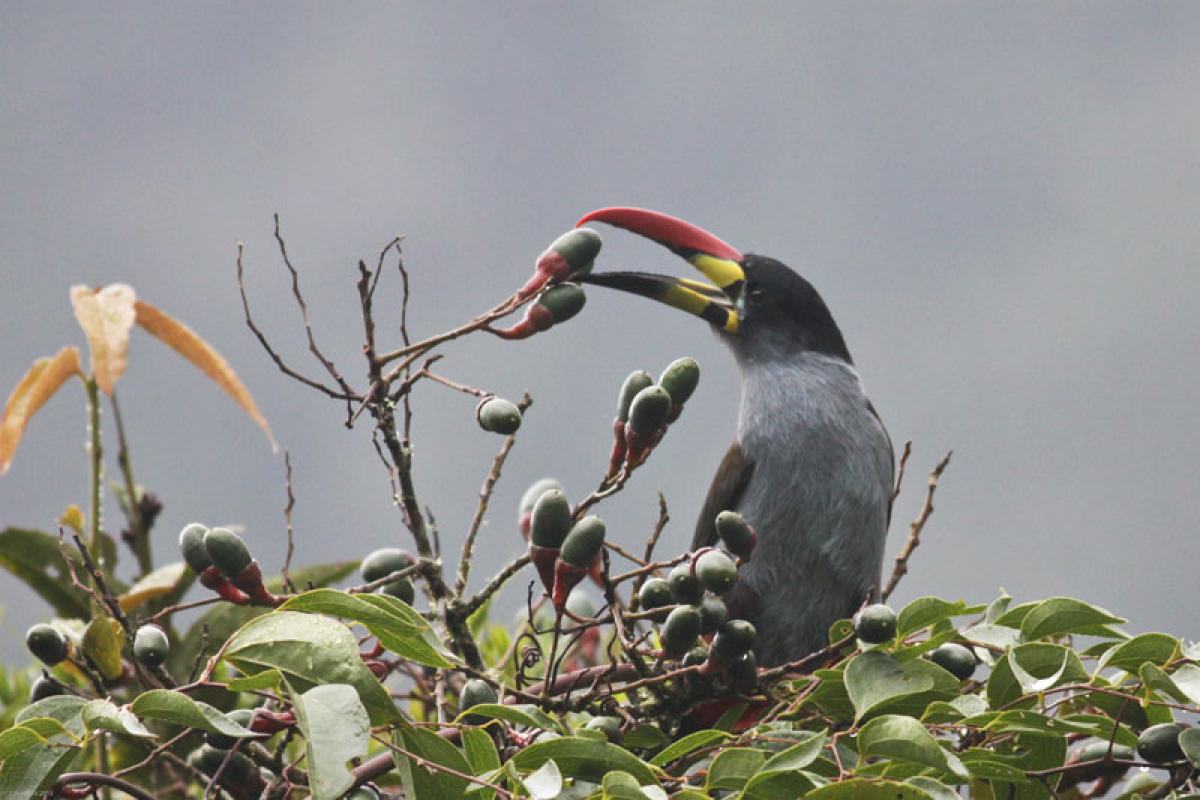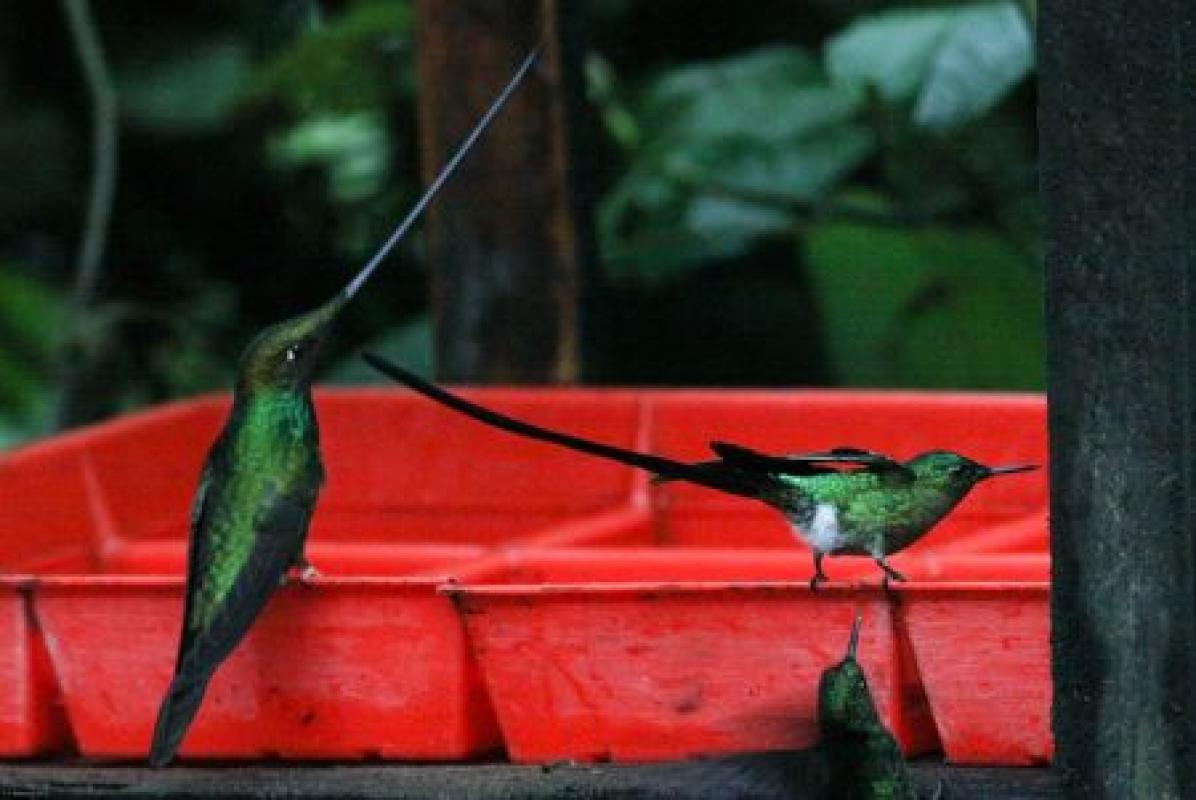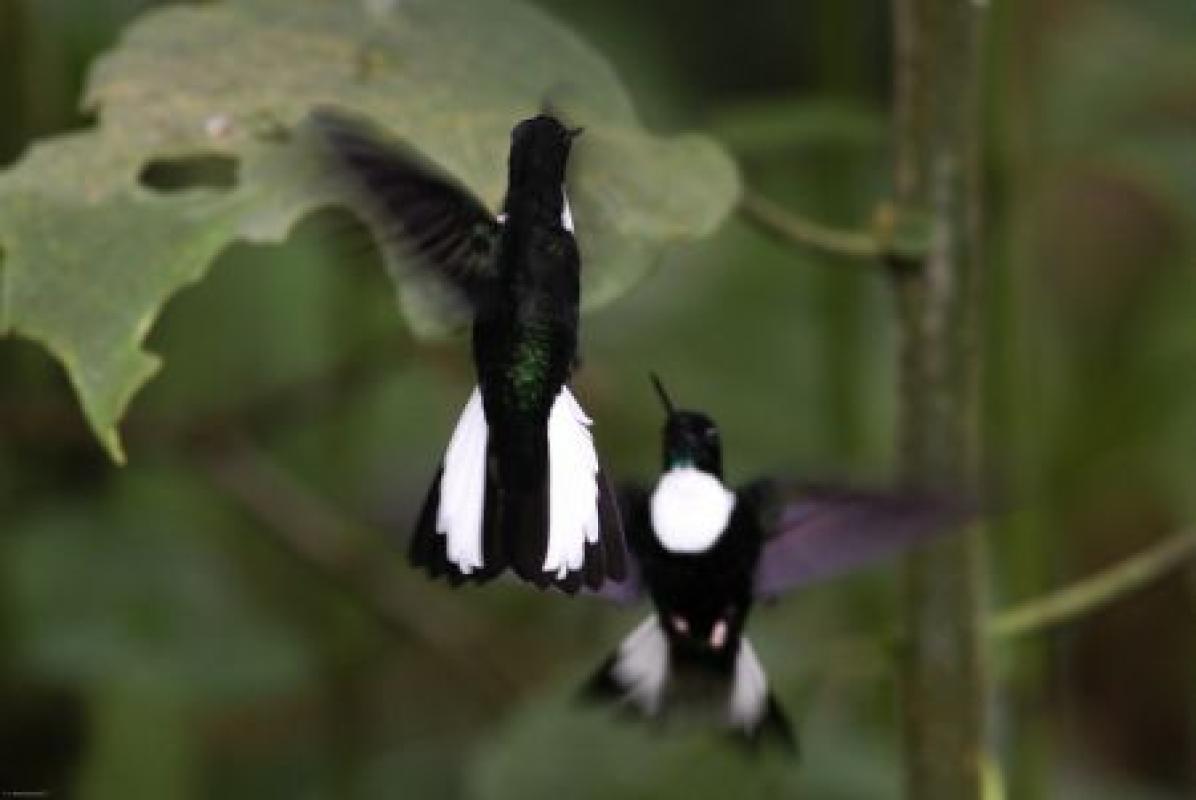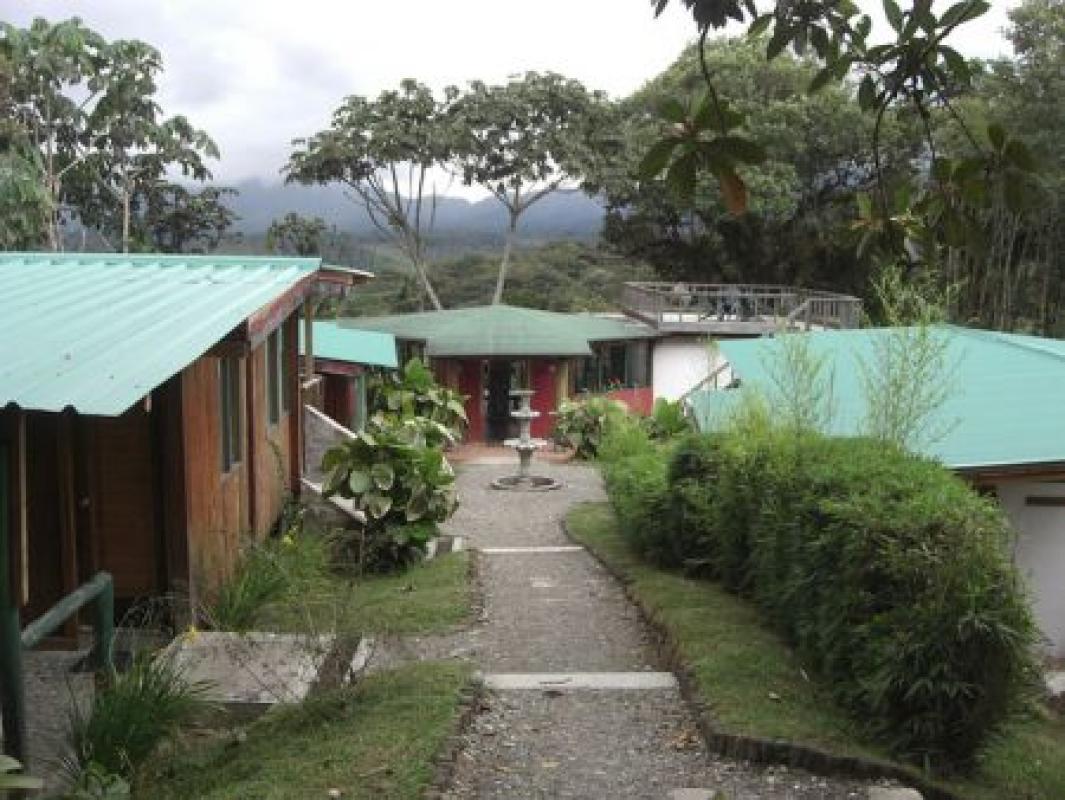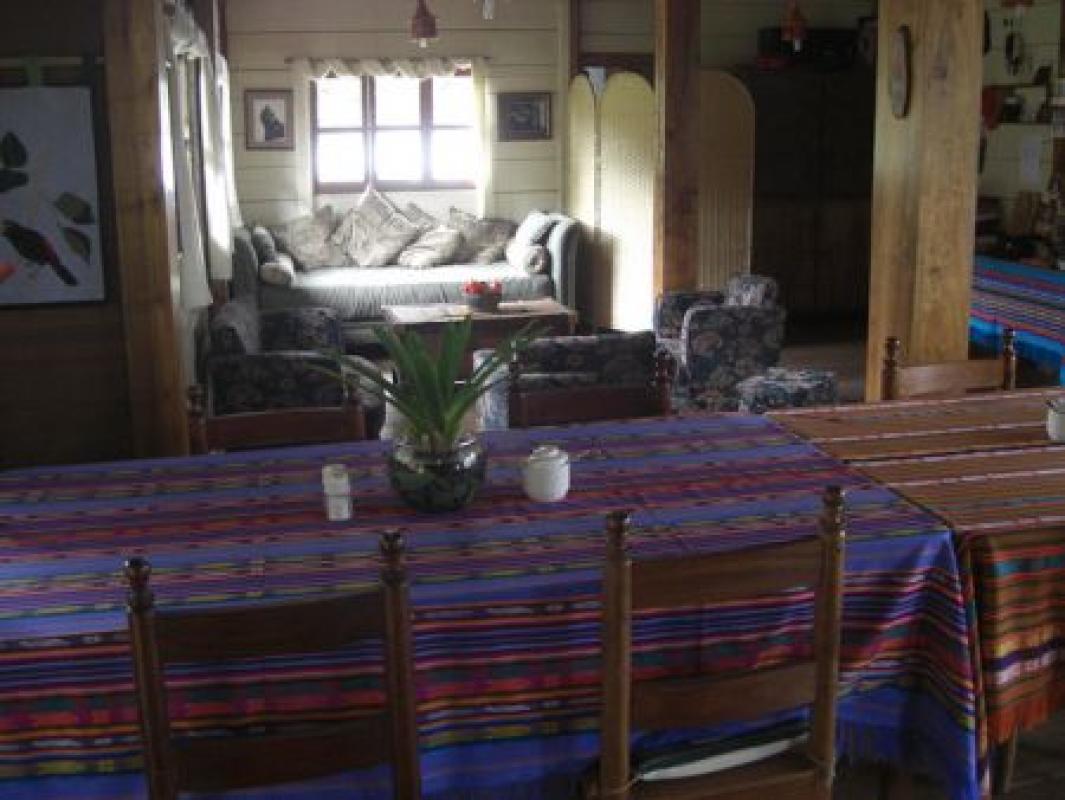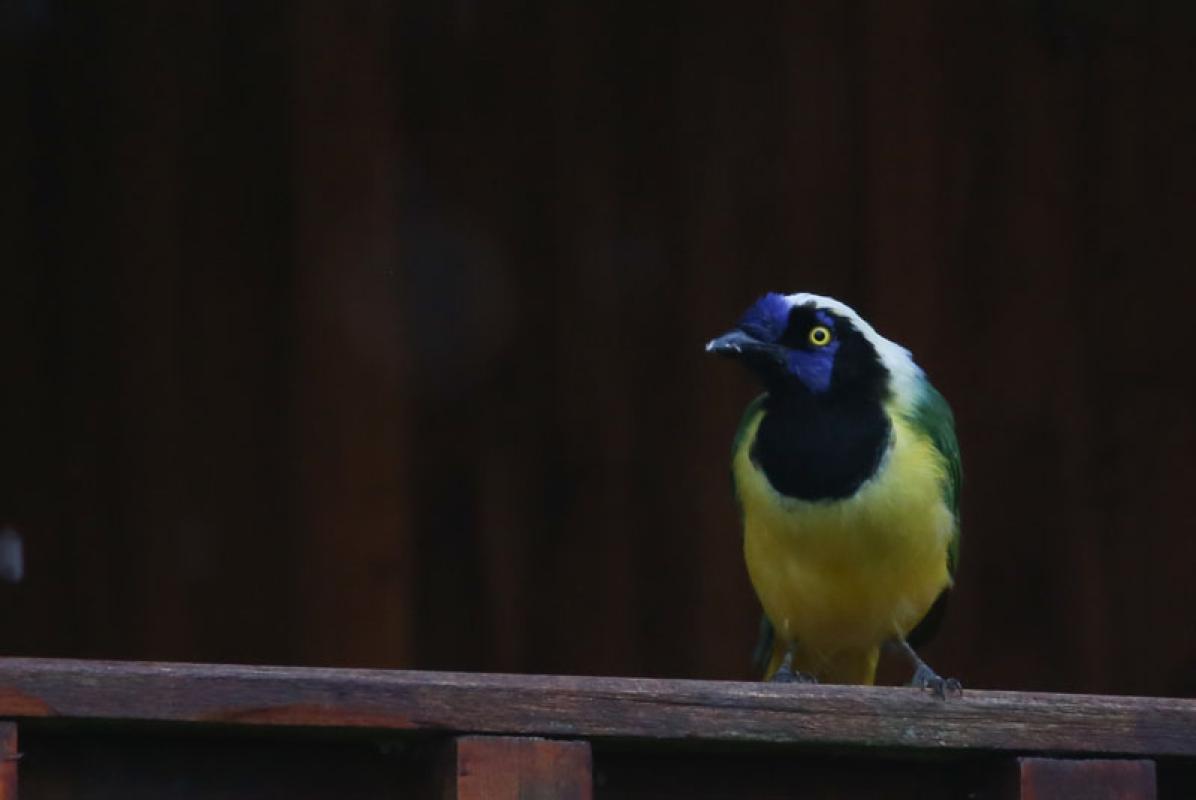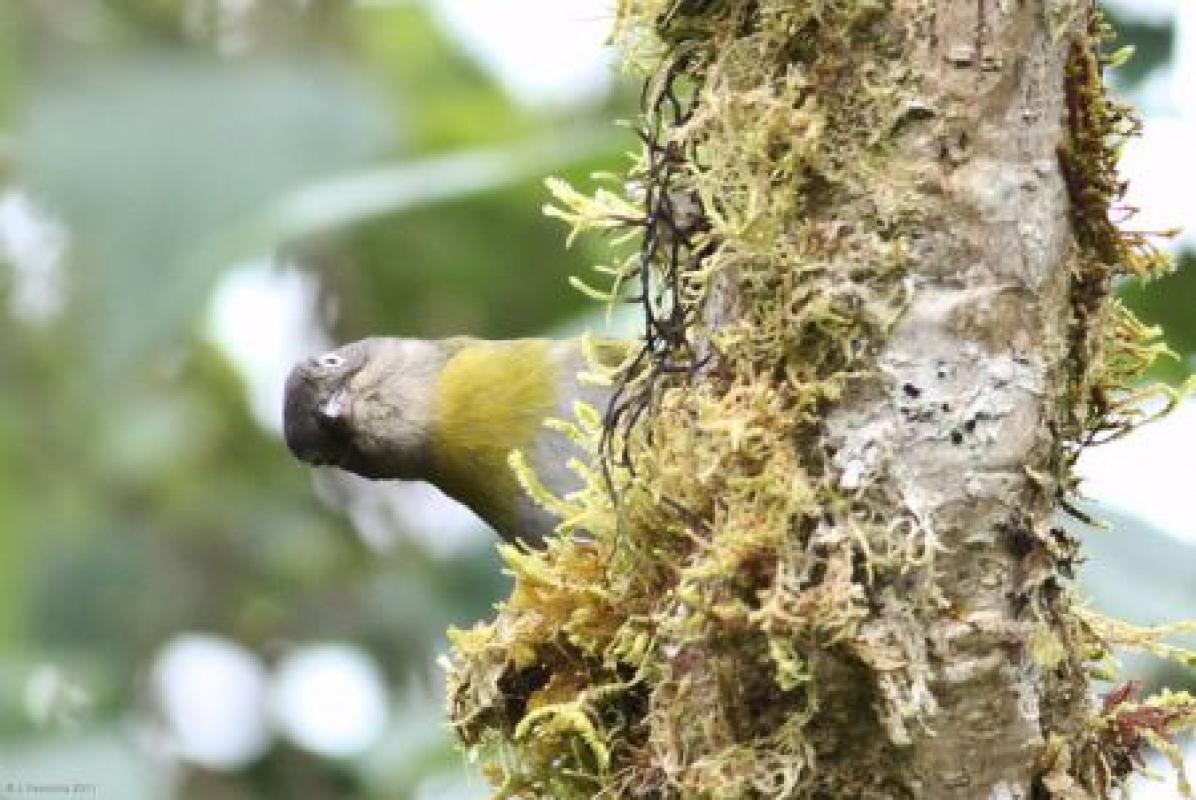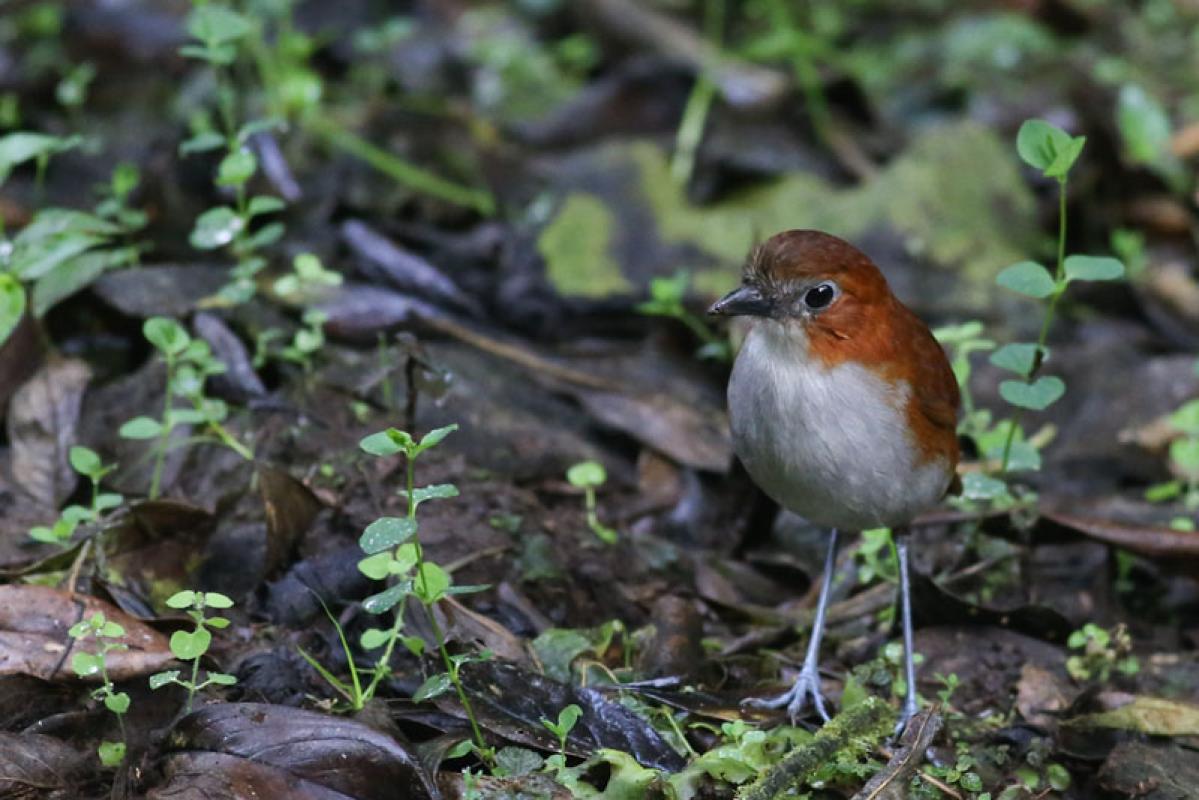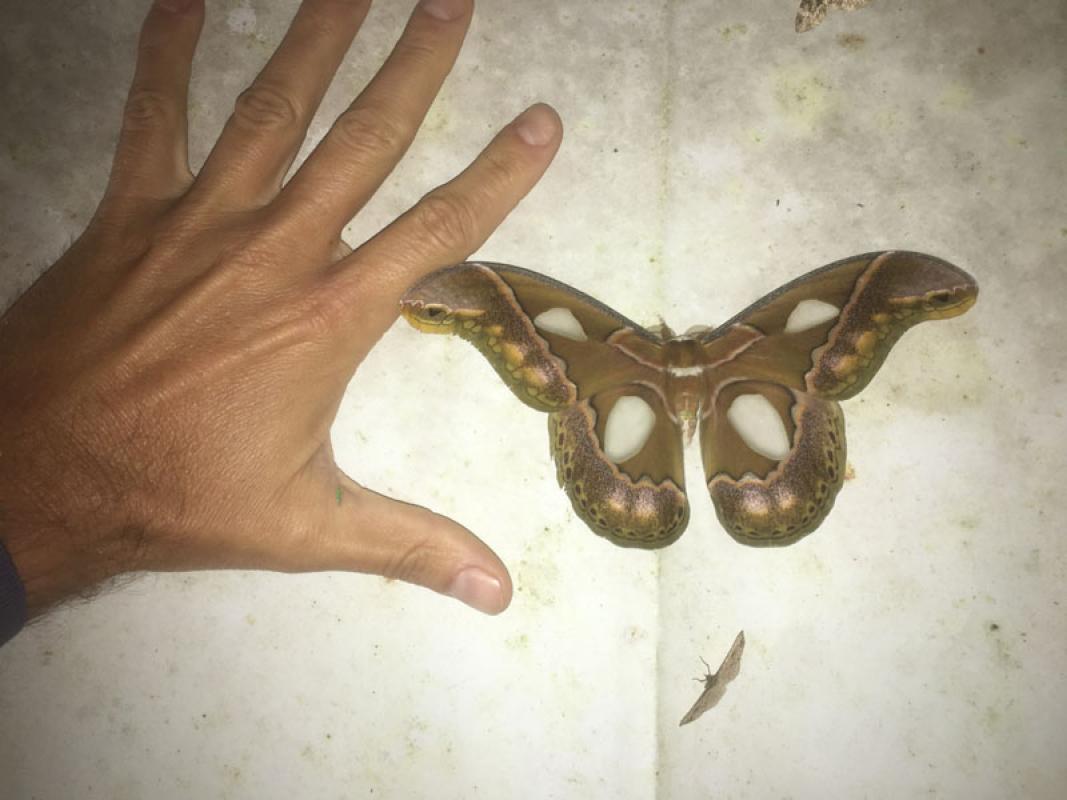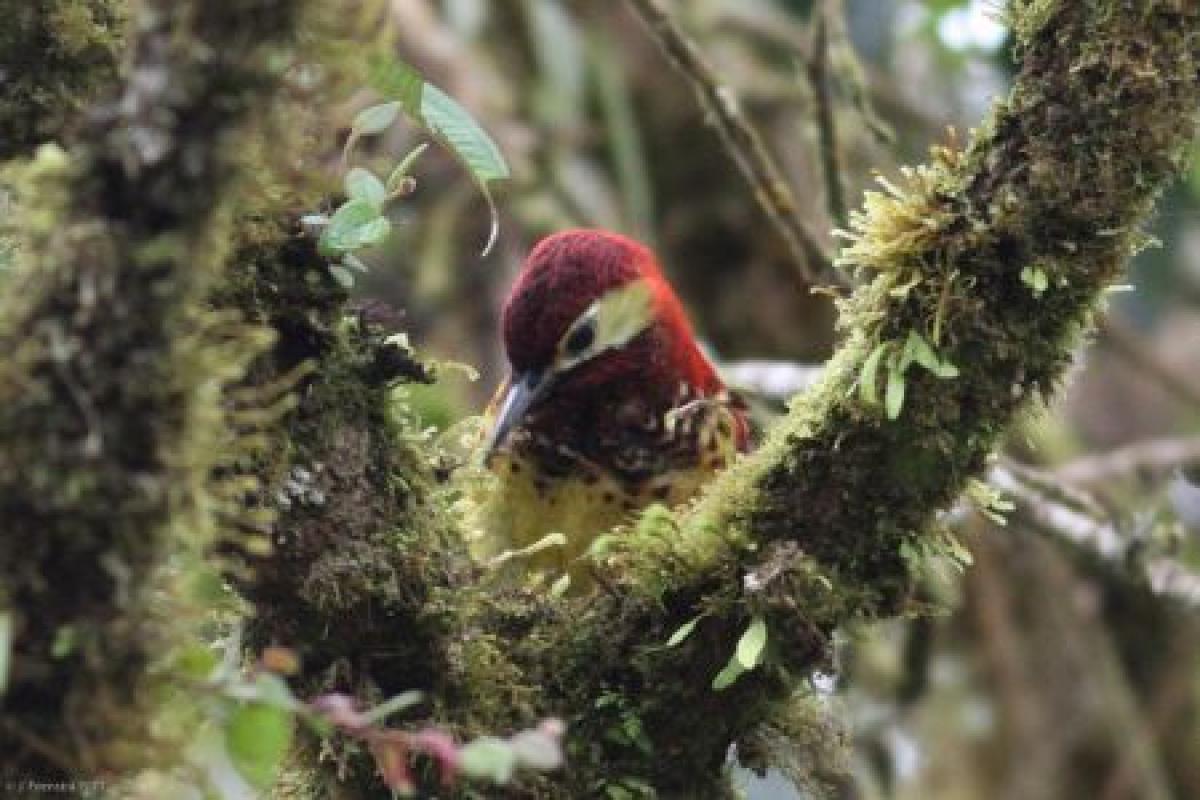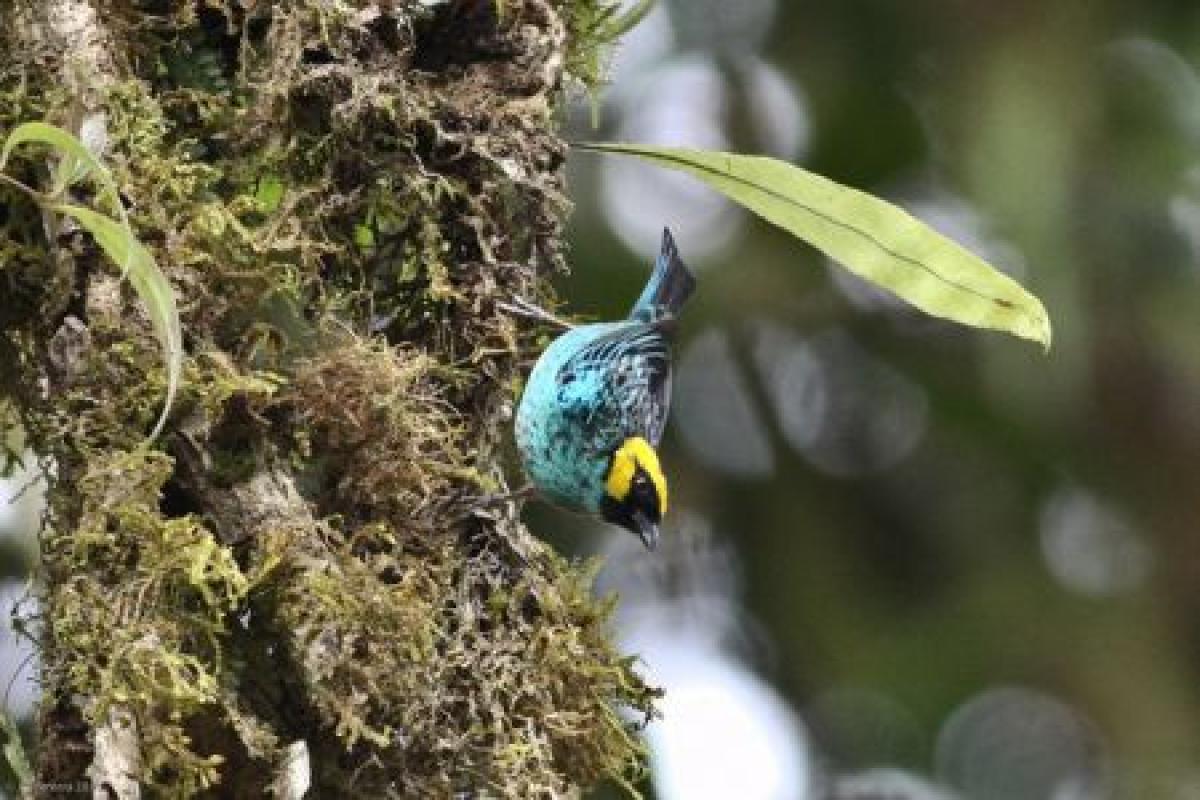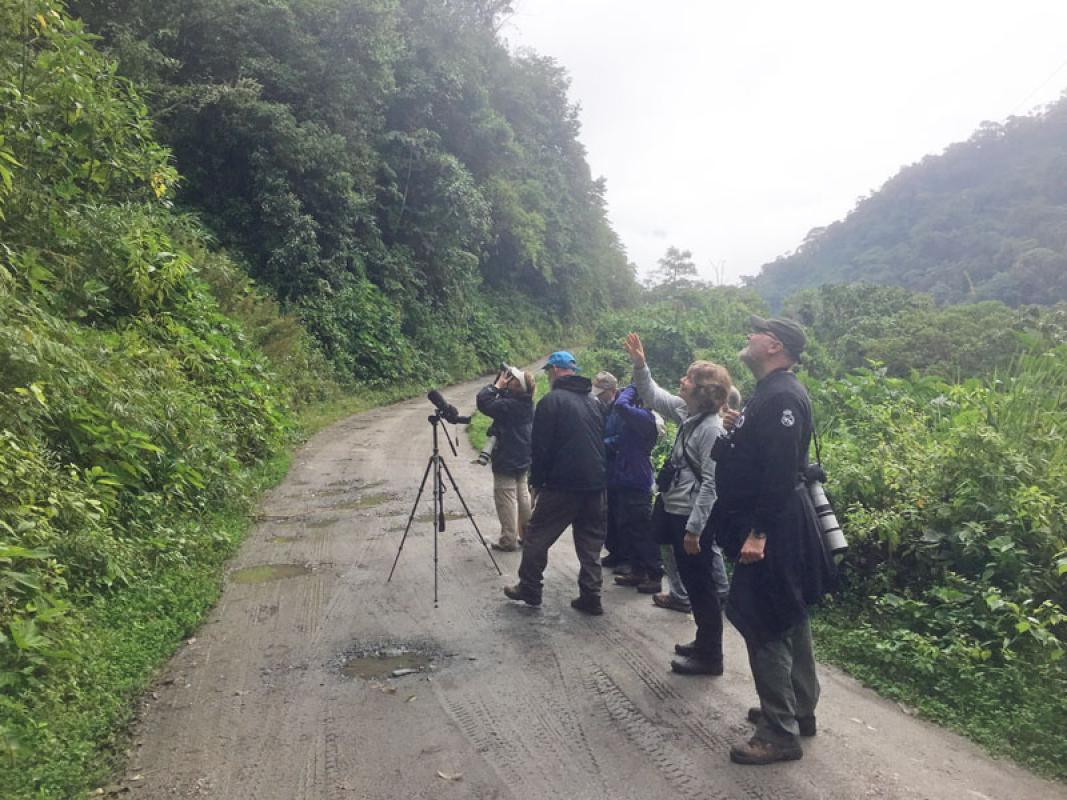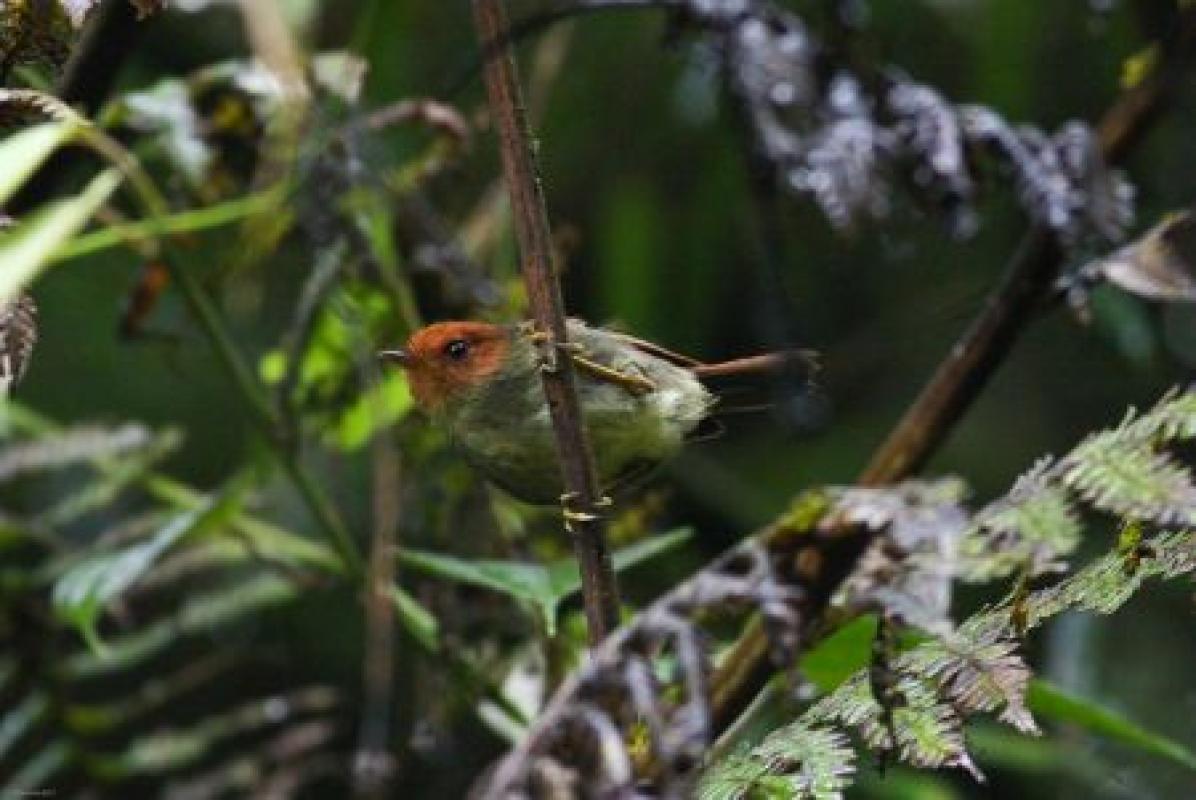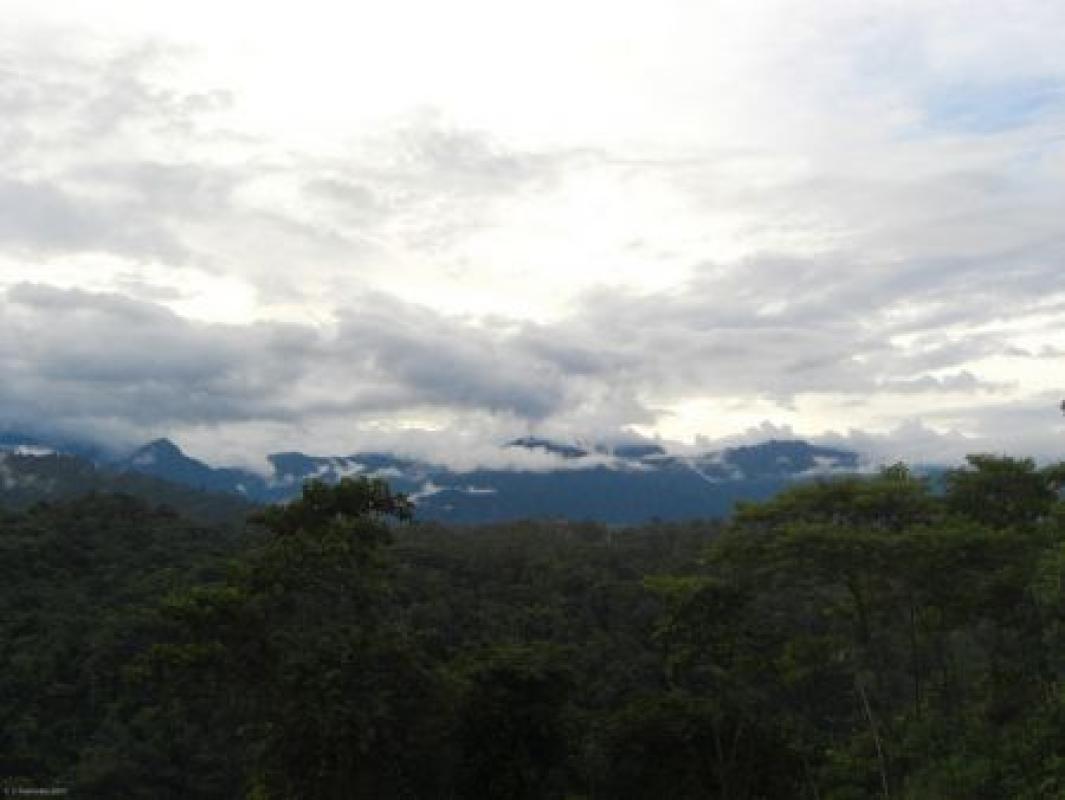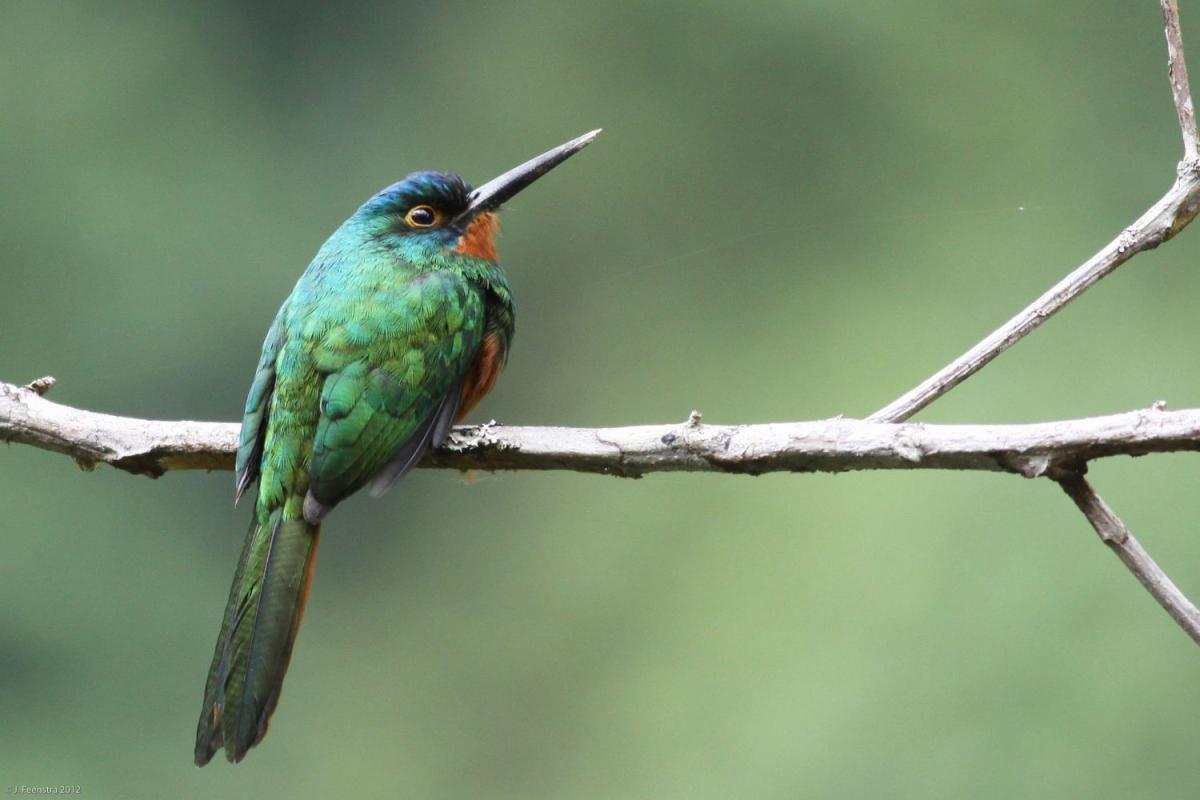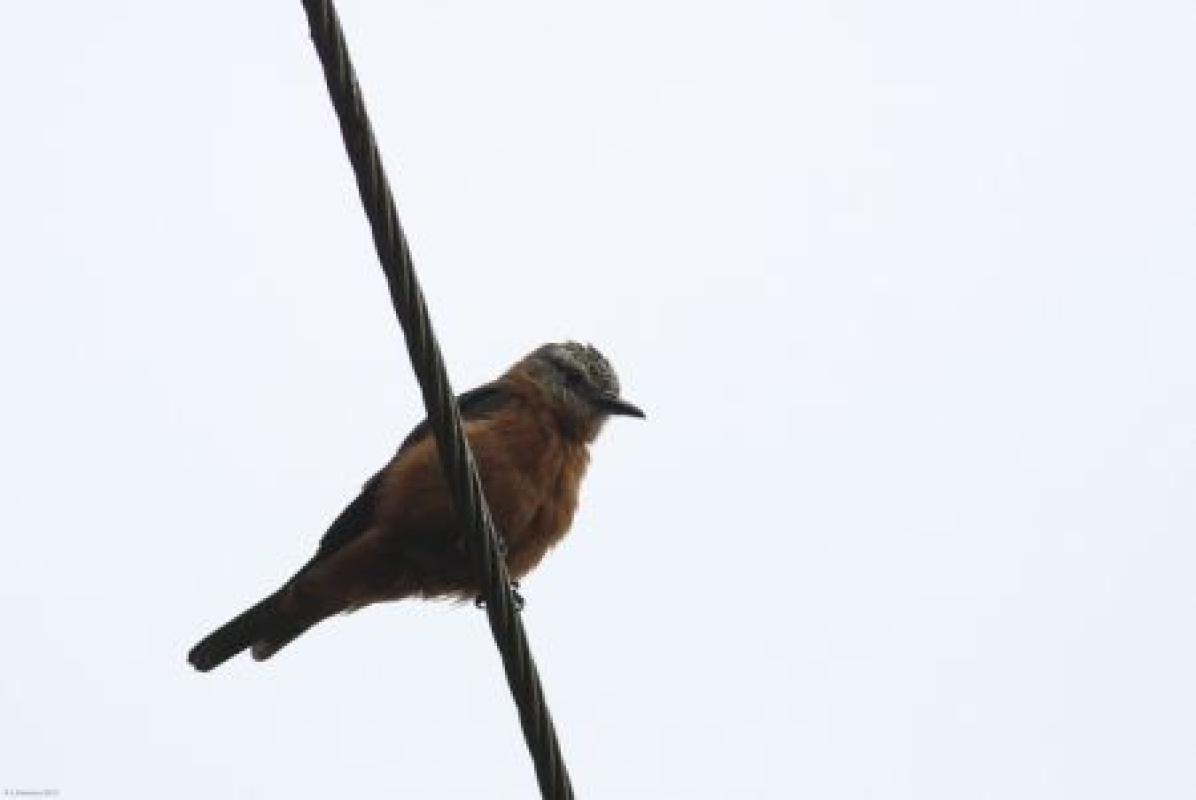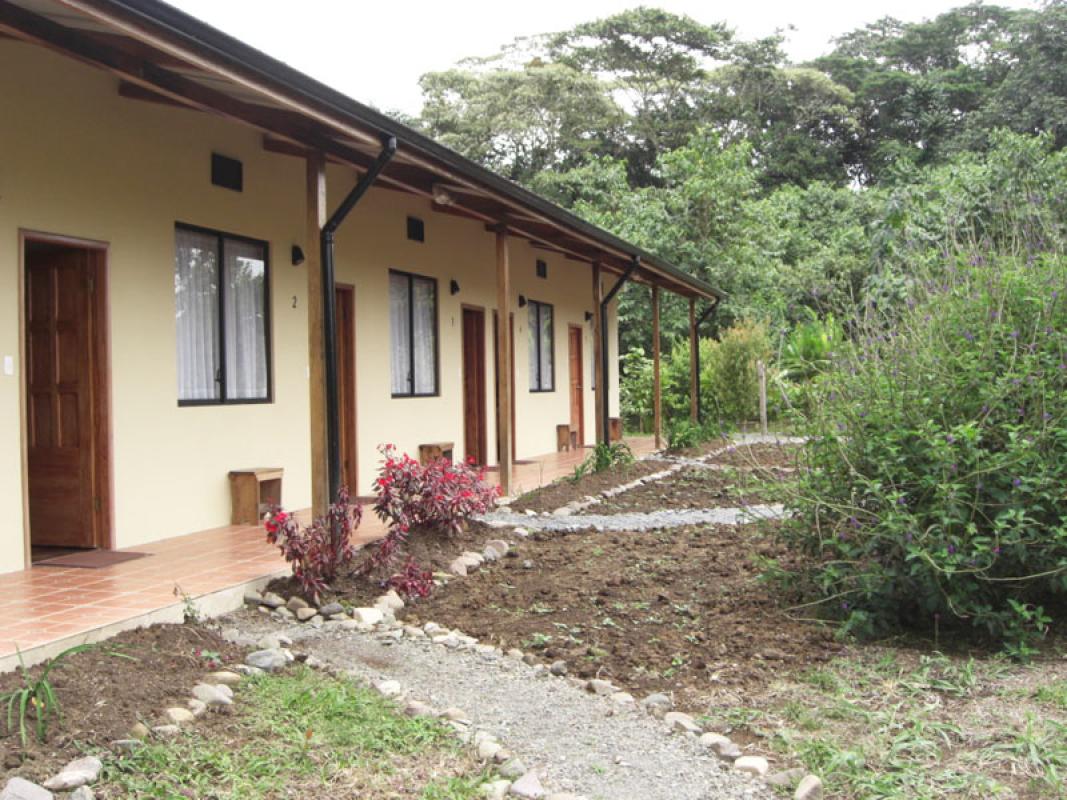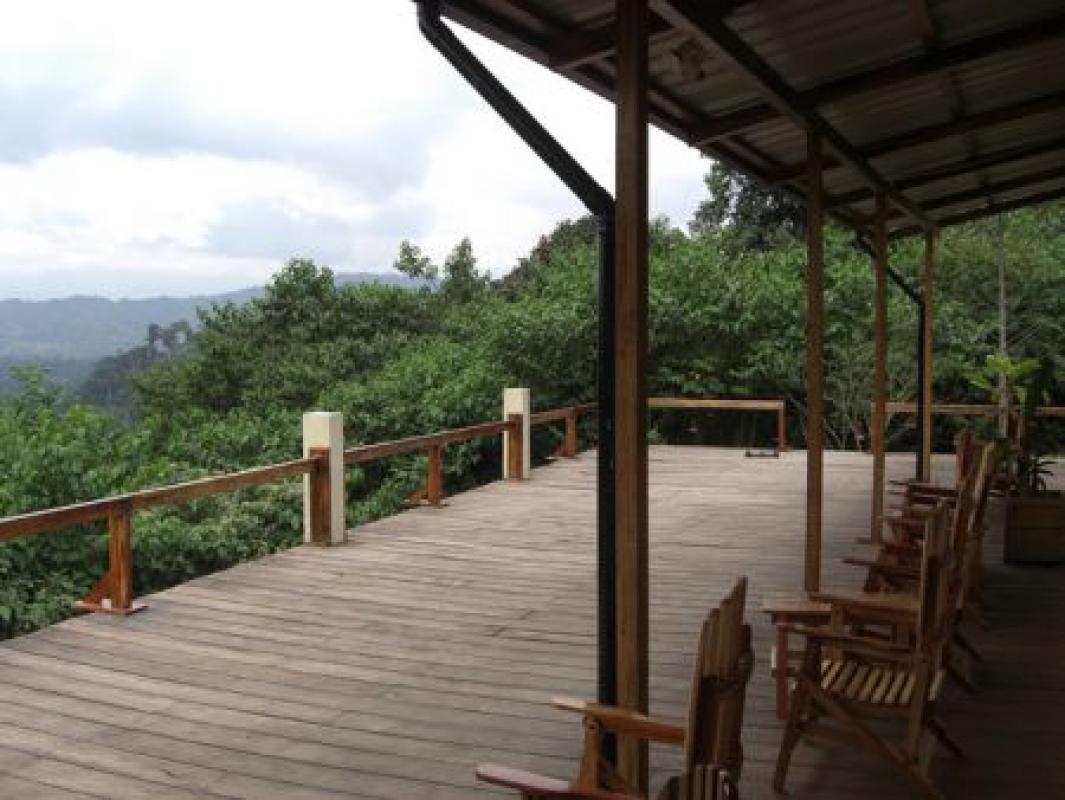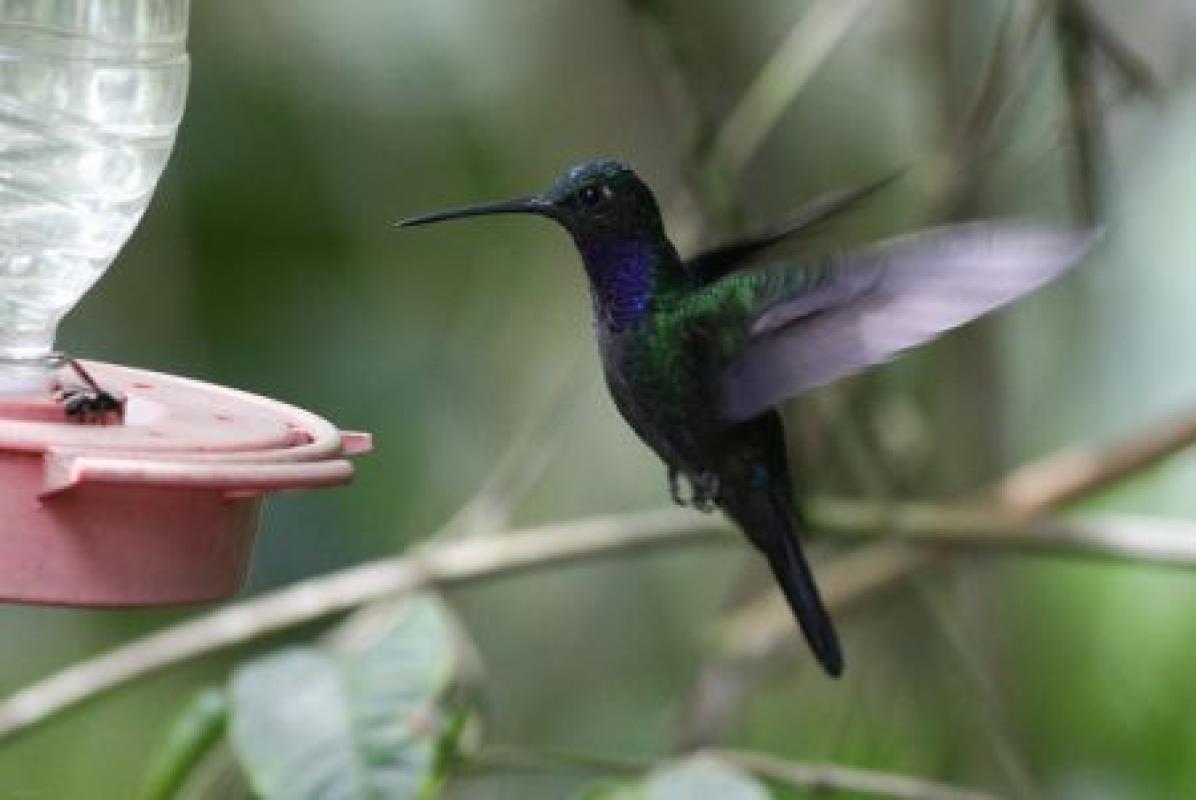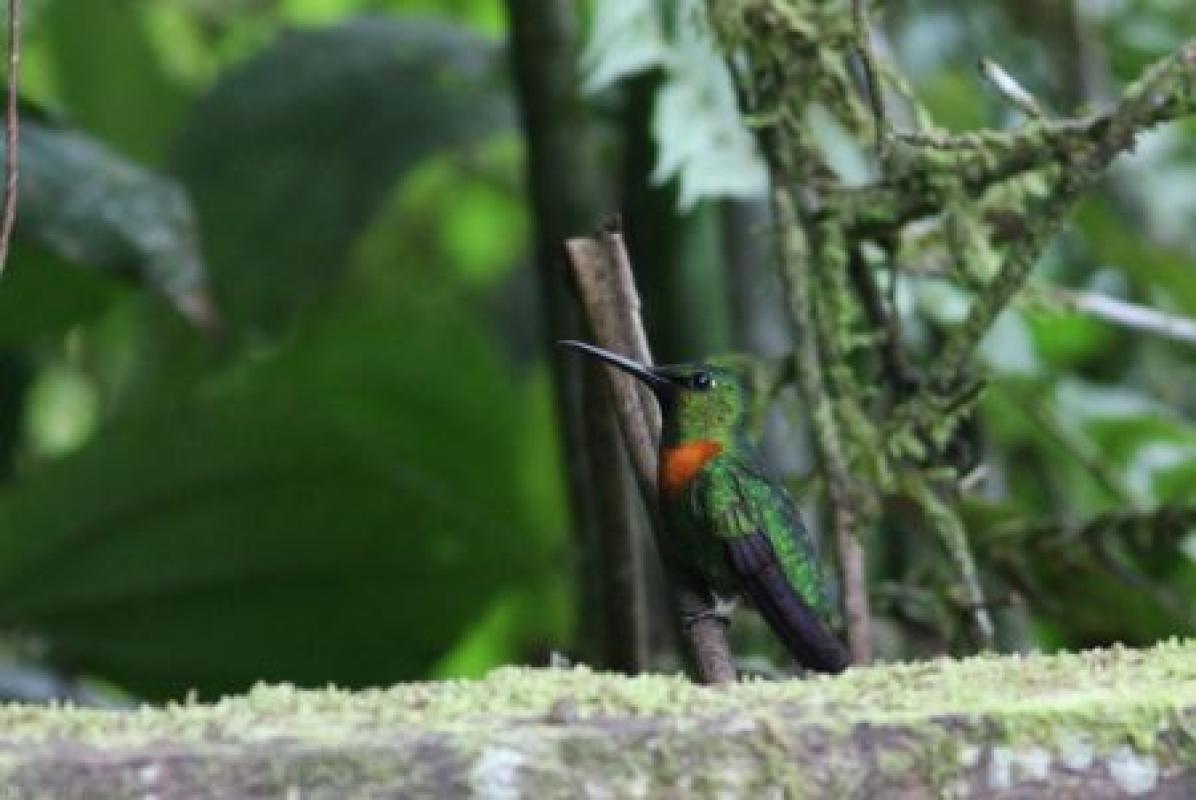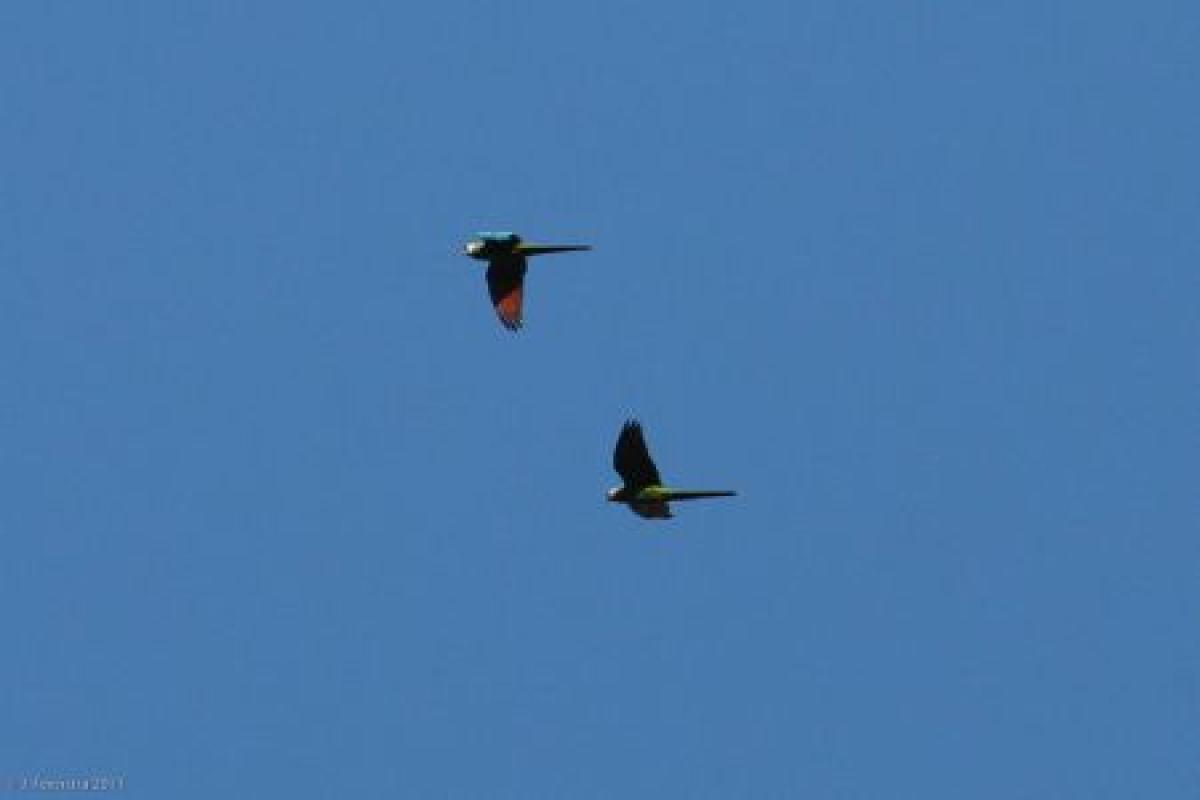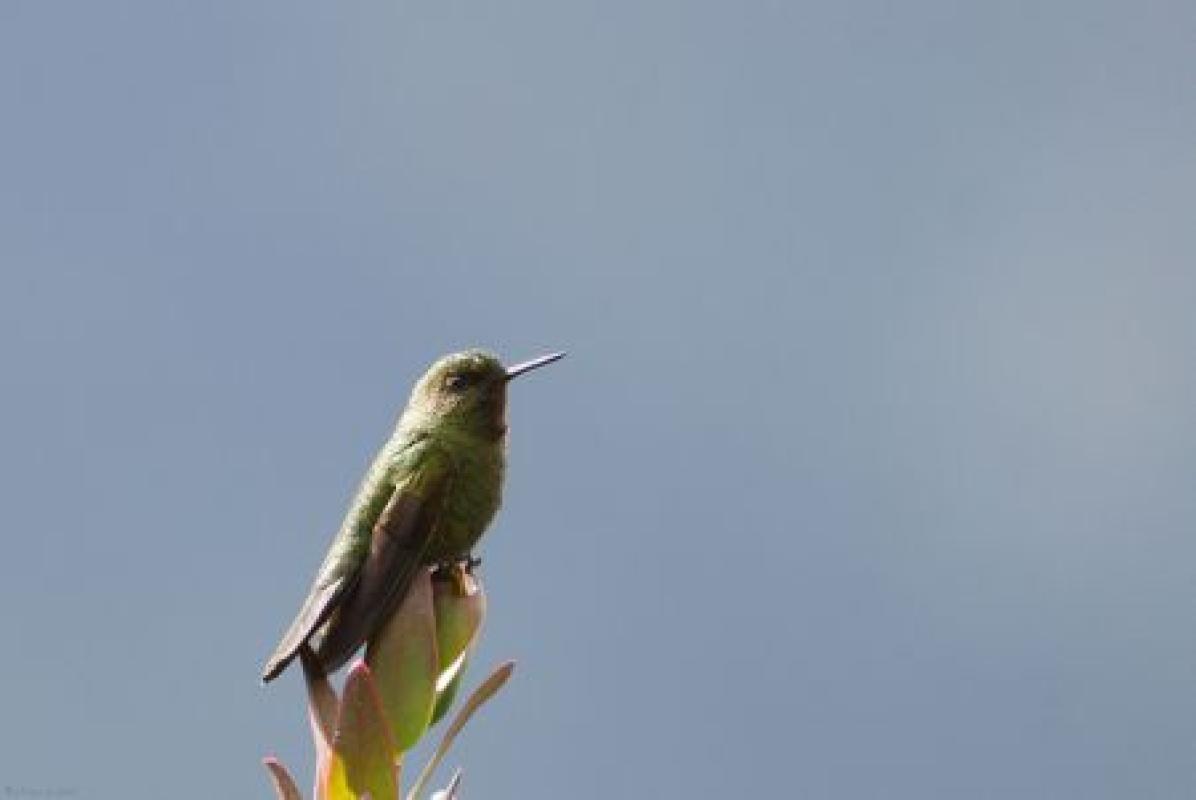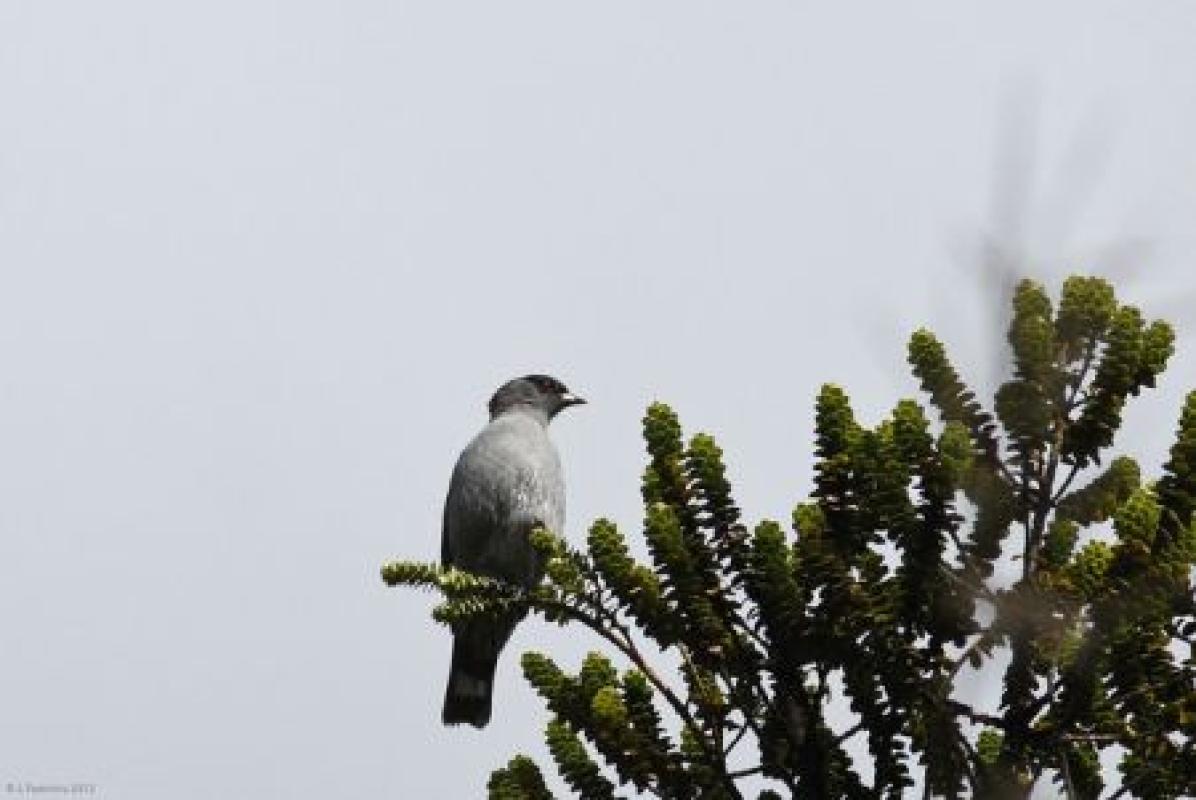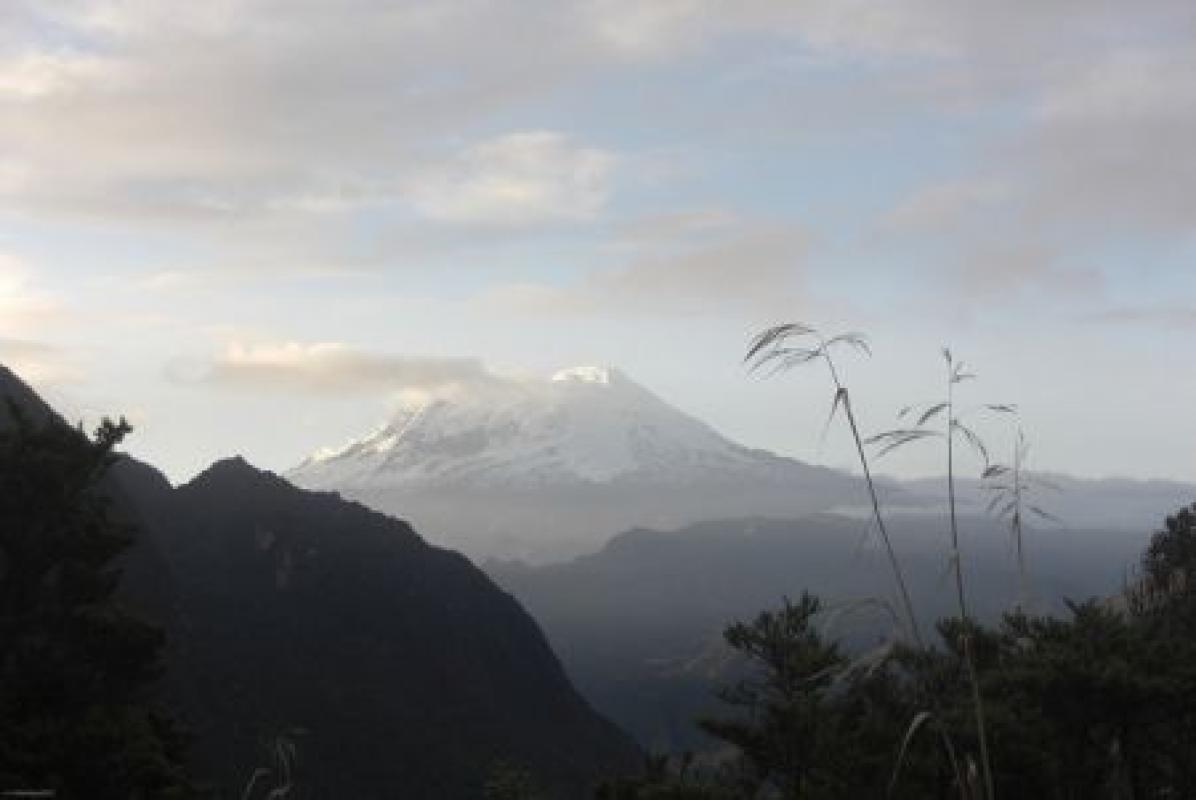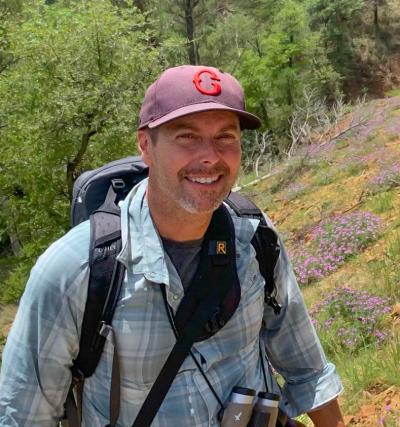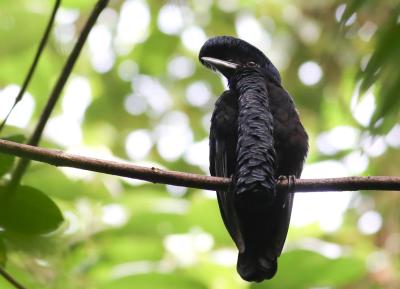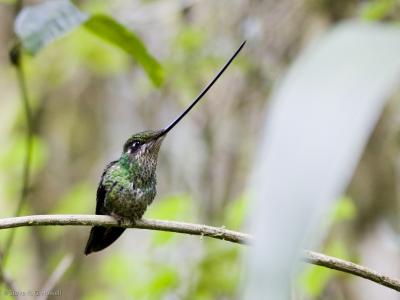Ecuador: The East Slope of the Andes
-
Feb 12-20, 2025
Jon Feenstra
Ecuador as a birding destination is well known and difficult to rival, and the east slope of the Andes as they plunge toward the humid lowlands of the steamy Amazon Basin is about as rich in bird species as it gets. The scenic peaks of the eastern Andes combine high páramo habitats that are home to such iconic species as Andean Condor and Rufous-bellied Seedsnipe with lush temperate, subtropical, and foothill forests that are alive with spectacular tanagers and fancy hummingbirds. This tour is designed to sample the eastern Andes’ impressive and exciting birding across multiple elevations, from the high páramo above the treeline to the cloud forests and rainforests of the Amazonian foothills, all from the comfort of the region’s best and most famous eco-lodges.
This tour can be taken in conjunction with both Ecuador: Mindo & the NW Andes and Ecuador: The Amazon Lowlands tours.
This tour can be taken in conjunction with both Ecuador: Mindo & the NW Andes and Ecuador: The Amazon Lowlands tours.
Day 1: The tour begins at 6:30 pm with a dinner meeting at our hotel in Puembo, a suburb of Quito near the airport. Night in Puembo.
John Feenstra’s leadership was invaluable. The diversity and productivity of his selected birding sites was quite impressive. He keeps a tight schedule, maximizing time in various habitats. He is also excellent with visual and audio identification of birds. In addition, John is an amiable traveling companion with a good sense of humor. Having attempted similar trips by myself in the past, I estimate that I saw twice as many species traveling with John and the group than I would have seen solo.Douglas Holder, Feb 2019
Day 2: We’ll leave early this morning for the high mountain meadows of Antisana National Park, at the foot of the Antisana volcano. If the sky is clear, there are spectacular views of the mountaintop and glacier. The national park is most famous for its relative easy viewing of Andean Condor. These immense birds can be seen flying around over the treeless expanse. The condors are just one species, though, and the park is home to many other montane specialties such as Carunculated Caracara, Andean Ibis, Ecuadorian Hillstar, Tawny Antpitta, and Many-streaked Canastero. We’ll visit the alpine reservoir at the end of the road where there is usually a flock of Silvery Grebes, and Andean Lapwings stalk the edges. Lunch will be at a restaurant on the edge of gorge across from where the condors often come to roost, and sometimes Giant Hummingbird visits the feeders just outside. We’ll be back in Puembo for dinner and the night.
Day 3: This morning we drive for less than an hour from the hotel to the high páramo habitats of the Cayambe-Coca National Park at the Papallacta Pass, at nearly 15,000 feet of elevation. Birding at the pass and above gives us another try at some mountain specialties, most particularly Rufous-bellied Seedsnipe, but also Variable Hawk, Andean Tit-Spinetail, Chestnut-winged, and Stout-billed Cinclodes, and Plumbeous Sierra-Finch. We’ll spend some of the morning birding here before descending down the Amazonian slope to forested grounds of Guango Lodge, where we’ll have lunch and walk some trails. The big show is put on at an array of hummingbird feeders off the front porch. Such fabulous hummers as the impossibly proportioned Sword-billed Hummingbird visit occasionally. Others, such as Tourmaline Sunangel, Chestnut-breasted Coronet, Long-tailed Sylph, and Glowing Puffleg, are all possible as well. We’ll spend part of the afternoon on the grounds watching the hummingbirds and checking the adjacent river for Torrent Duck and White-capped Dipper. Then we’ll continue our journey downslope to Cabañas San Isidro, only an hour and a half away, possibly making a stop or two for such roadside attractions as Red-breasted Meadowlark and Vermilion Flycatcher. We’ll arrive at Cabañas San Isidro in the late afternoon with time to settle in before we’re treated to quite possibly the best cooking in Ecuador. Night at Cabañas San Isidro.
Day 4: We’ll have an entire day to explore the full birding potential of the grounds of San Isidro. We’ll walk on relatively level, little-traveled roads and occasionally on trails through the beautiful cloud forest. We’ll begin at first light, watching birds lured to the buffet at the lodge’s lamps, where insects have been collecting all night. It’s a great way to get those first good looks at such species as Montane Woodcreeper, Black-billed Peppershrike, and the wonderfully named Marble-faced Bristle-Tyrant. Striking off on foot to bird the access road of the lodge is excellent for fancy birds such as both Golden-headed and Crested Quetzals, Speckle-faced Parrot, Pale-eyed and Glossy-black Thrushes, and the diminutive Rufous-crowned Tody-Flycatcher. Mixed-species flocks of tanagers, including representatives of the genus Tangara such as the spectacular (and spectacularly named!) Saffron-crowned, Black-capped, Beryl-spangled, Flame-faced, and Golden-naped, are possible on the road or anywhere around the lodge.
The trails at San Isidro provide access to the interior of the forest, where we may find Andean Cock-of-the-rock, as well as bamboo thicket specialties such as Rufous Spinetail, Streak-headed Antbird, and Plain-tailed Wren. White-bellied Antpitta, which occurs in the forest around the lodge, may be coming to the nearby worm feeding station. We’ll bird all day, have both lunch and dinner at the lodge, and may very well not even get into the van once. After dinner, while walking back to our cabins, we’ll shine our lights into the trees and with luck locate the “San Isidro” Owl, a subspecies of Black-banded Owl known only from this area. Night at Cabañas San Isidro.
Day 5: This morning we may begin our birding day about 20 minutes down the main road at the Guacamayos Pass. First thing in the morning is the time to watch the swifts screaming over the pass. White-collared and Chestnut-collared make up the majority, but there is a chance for flocks of the little-known and infrequently observed White-chinned, White-chested, and Spot-fronted Swifts as well. This spot is also an excellent vantage point for the valley below and a good place to observe mixed flocks that might contain such incredible tanagers as the gaudy Grass-green, the noisy and gregarious White-capped, or the local Lacrimose Mountain-Tanager. A Black-billed Mountain-Toucan can occasionally be found on one of the treetops. The trail along the Guacamayos Ridge beginning from the parking lot can be equally exciting. We’ll walk over the cobblestones of this ancient Inca message relay route while looking for Powerful Woodpecker, Rufous-headed Pygmy-Tyrant, Dusky Piha, Barred Fruiteater, and Ocellated Tapaculo, among others.
After lunch back at the lodge, we’ll head downhill and east along the Loreto Road with a couple of quick stops to look for Cliff Flycatcher and Green-backed Hillstar near one of the waterfalls. We’ll arrive at Wildsumaco Lodge in the afternoon and settle in. Night at Wildsumaco.
Day 6: We’ll spend the day birding within walking distance of the lodge. Situated in the lower foothills at about 4,500 feet of elevation, the grounds have a mix of montane, foothill, and lowland species. Wildsumaco lies at the perfect elevation to find a number of normally difficult-to-find species. Today’s birding will be done from a seldom-traveled dirt road and along a system of forest trails. Coppery-chested Jacamar, Ecuadorian Piedtail, Ecuadorian Tyrannulet, and Gray-tailed Piha are resident species. Such rare and local foothill birds as Red-billed Tyrranulet, Ornate Stipplethroat, and Chestnut-crowned Gnateater are known from the trails, and we’ll keep a special eye out for them. The hummingbird feeders here are top-notch, and if the forest gets quiet in the afternoon or we get some rain, we’ll spend a little time on the back porch of the lodge to watch for Black-throated Brilliant, Napo Sabrewing, Wire-crested Thorntail, Gould’s Jewelfront, and Violet-headed Hummingbird. Antpitta feeding occurs here, too, and with a little luck, we could see both Plain-backed and the tiny Ochre-breasted Antpittas. After dark, Tropical Screech-Owl and Band-bellied Owl are possible. Night at Wildsumaco.
Day 7: After birding the grounds of the lodge until lunch, we’ll begin our return and our ascent. As we make the three-and-a-half-hour drive back to Guango Lodge, we may stop briefly along the way for a little birding and scenery. We’ll arrive at the lodge in time for some afternoon hummingbird watching, perhaps a quick walk around the grounds for that must-be-somewhere Gray-breasted Mountain-Toucan, and dinner. Night at Guango Lodge.
Day 8: Possibly after some sifting through mixed flocks, we’ll leave Guango for the national park above the Papallacta hot springs. In this upper temperate woodland, we have a chance for Masked Mountain-Tanager, Black-backed Bush-Tanager, and other specialties of this elevation. Though we will have seen new hummingbird species on every day of the tour, we should add a few more here, perhaps including Viridian Metaltail and Rainbow-bearded Thornbill. We’ll have a picnic lunch on the quiet roadside, keeping an eye up for the possible pass of Black-chested Buzzard-Eagle. From here the drive back to Puembo takes about an hour and a half, so we might have enough time for a few stops on the “old road” to poke around for anything we may have missed and get our last look at the rugged mountain skyline before we return to civilization. We’ll arrive back in Puembo in the afternoon with time for some last-minute feeder watching and a farewell dinner. Night in Puembo.
Day 9: The trip concludes this morning in Puembo.
Note: The information presented below has been extracted from our formal General Information for this tour. It covers topics we feel potential registrants may wish to consider before booking space. The complete General Information for this tour will be sent to all tour registrants and of course, supplemental information, if needed, is available from the WINGS office.
ENTERING AND LEAVING ECUADOR: Ecuadorian authorities require a passport that is valid for at least six months after the date of your arrival in Ecuador. Visas are currently not required for U.S. and Canadian citizens. Tourist cards are prepared by your arriving airline. There is a $40.80 departure tax in Ecuador, which is typically included in the price of your airline ticket, but have cash on hand in the event that it changes.
Proof of health insurance may be required when entering Ecuador. As of this writing, it hasn’t yet gone into effect, and the exact requirements are unclear. It’s probably best to have your insurance card or travel insurance confirmation with you on arrival. If for some reason your coverage doesn’t meet the requirement, we have been told that medical insurance can be purchased at the airport and that there are 2 or 3 companies stationed just outside of the baggage area. The basic insurance plans offered at the airport run about $35 for 30 days of coverage. The more comprehensive plans run somewhere around $95 for the same length of time.
Proof of a current Yellow Fever vaccination is required only if one is entering Ecuador directly from a country where the disease is endemic. Tourists entering Ecuador via transfer in Bogota or Panama have not been asked it is best to be prepared in the event that changes.
COUNTRY INFORMATION: You can review the U.S. Department of State Country Specific Travel Information here: https://travel.state.gov/content/travel.html and the CIA World Factbook here: https://www.cia.gov/the-world-factbook/. Review foreign travel advice from the UK government here: https://www.gov.uk/foreign-travel-advice and travel advice and advisories from the Government of Canada here: https://travel.gc.ca/travelling/advisories.
PACE OF THE TOUR: This is a moderately strenuous tour with long days and with a lot of slow walking and periods of standing and sitting. Daylight on the equator lasts only 12 hours and birds are most active in the early morning. Early starts are the rule, although these may be counteracted on most days by a post-lunch siesta or several hours of free time before dinner. The majority of the birding will be done on dirt roads and along trails. When not birding on foot from our hotel, our vehicle and driver will be nearby in the event that you need to leave anything in the vehicle during the days out. Bathroom facilities and running water are available at some of the reserves visited, but the presence of modern facilities should not be counted on during our birding days.
The conditions of the trails at the lodges and reserves vary. Some are flat, others are hilly. Most have carved earthen steps, steps made from old tires, or wooden steps reinforced with wire. When they’re dry, the trails are not difficult. When the trails are wet, they can be slippery and more difficult to negotiate. If we have a rainy period, the trails will be muddy and hill climbing may be difficult for the less agile. Please be prepared. A collapsible walking stick is often useful. Rubber “wellie” boots are available for use at Wildsumaco and Guango.
On one or two days, we’ll bird away from the lodge packing a box lunch, and returning in the late afternoon for dinner. There will be at least one optional after-dinner owling excursion.
HEALTH: The Centers for Disease Control and Prevention (CDC) recommends that all travelers be up to date on routine vaccinations. These include measles-mumps-rubella (MMR) vaccine, diphtheria-tetanus-pertussis vaccine, varicella (chickenpox) vaccine, polio vaccine, and your yearly flu shot.
They further recommend that most travelers have protection against Hepatitis A and Typhoid.
Yellow Fever: The CDC recommends Yellow Fever protection for visitors traveling in rural Ecuador.
Malaria: The CDC currently recommends taking malaria prophylaxis for destinations below 4,900 feet (Wildsumaco at 4900 feet is the lowest elevation at which we’ll be sleeping. Please consult your physician as to the right course of action.
The most current information about travelers’ health recommendations can be found on the CDC’s Travel Health website here: https://wwwnc.cdc.gov/travel/destinations/list
Elevation: On the drive over the Andes from Quito, we will likely do some birding in the high-elevation paramo at close to 15,000 feet. Although most people are not affected by such short exposure to the high elevation, anyone with a history of altitude or breathing problems should discuss it with their physician. Wildsumaco is at 1480 m (4900 ft), Cabanas San Isidro at 2050 m (6800 ft), and Guango Lodge is at 2700 m (9000 ft) elevation.
Smoking: Smoking is prohibited in the vehicles or when the group is gathered for meals, checklists, etc. If you are sharing a room with a nonsmoker, please do not smoke in the room.
Miscellaneous: One can never completely escape the risk of parasites or fungal infections. We avoid tap water and purified water is readily available. Finally, you may wish to bring a broad spectrum antibiotic in case of stubborn bacterial infections and an anti-diarrhea medication such as Imodium.
Biting insects are usually only a minor problem on this tour, and most areas are delightfully insect-free. We recommend using insect repellents with a high concentration of DEET. However, care must be taken to avoid getting the DEET repellent on optical equipment as DEET dissolves rubber and plastic and can damage coated lenses. Camping supply stores and outfitters carry some reasonably effective alternatives, which contain natural products and aren’t corrosive. One example is a product containing permethrin 0.5%, which must be applied directly to clothing in advance of wearing and allowed to dry. This non-staining, odorless chemical is non-toxic to humans and protective on clothing through several launderings.
CLIMATE: Quito has been called the city of eternal spring, and the climate is crisp and cool with chilly nights and pleasantly warm days. Rain is always possible, but sunburn is more likely. Guango Lodge where we will be spending one night is also at high elevation (nearly 9000 feet) and the nights can be chilly. For the most part, temperatures will be warm during the day (75 F, 24 C), and pleasantly cool at night (60-65 F, 15-18 C). Periods of rain and/or fog are likely, especially later in the afternoon. The lower elevations will likely be hotter.
ACCOMMODATION: Guango, San Isidro, and Wildsumaco are comfortable lodges catering to foreign tourists and birding groups. At all of the lodges, each room has a private bathroom and hot water. Each lodge is also situated within its own forest reserve allowing immediate access to hummingbird feeders and excellent birding.
INTERNET: Our lodging in Puembo the first and last night of the tour is currently the only location which has decent Wifi access. Cabanas San Isidro currently has Wifi but this is only available in the dining area and is rather unreliable. Guango Lodge and WildSumaco do not have wifi.
FOOD: Meals throughout are very good, with lots of vegetables, great soups, fruit juices, and various salads to accompany the fresh meat, chicken and fish. Vegetarians can be accommodated, but please let us know in advance. Food is prepared by places that cater to foreign tourists, using products washed in clean water.
Bottled Water: Bottled water is available at all our lodges and will be available on our tour vehicles.
Food Allergies / Requirements: We cannot guarantee that all food allergies can be accommodated at every destination. Participants with significant food allergies or special dietary requirements should bring appropriate foods with them for those times when their needs cannot be met. Announced meal times are always approximate depending on how the day unfolds. Participants who need to eat according to a fixed schedule should bring supplemental food. Please contact the WINGS office if you have any questions.
WINGS tours are all-inclusive and no refunds can be issued for any missed tour meals.
TRANSPORTATION: Transportation between birding destinations and throughout the tour will be in a van or small bus depending on the group size. We will travel on a variety of roads ranging from bumpy dirt roads off the beaten track to multi-lane highways around Quito. All driving will be done by a local Ecuadorian driver.
2024 Narrative
With about 3000m of elevation change and habitats as varied as rugged paramo just below the glacier line to foothill rainforest, this tour was a taste of all that the Amazonian slope of the Ecuadorian Andes has to offer. We saw over 300 bird species, including high-elevation species like Andean Condor, Black-chested Buzzard-Eagle, and Tawny Antpitta. Lower in the cloud forest we encountered fun things like a sleeping Andean Potoo, Andean Motmot, Torrent Ducks, and little things like Rufous-crowned Tody-Flycatcher and lots of colorful tanagers. The foothill rainforest was awash with birds like Military Macaw, Yellow-throated Toucan, Paradise Tanager, Black-faced Antbird, and (at night) Band-bellied Owl. The hummingbird list topped out at 41 species including the well-named Giant Hummingbird, but also the tiny and endearing Peruvian Racket-tails and ridiculous Wire-crested Thorntails. The area is simply a bottomless pit of birding and this week we did it justice.
To kick off the tour, we went about going to see perhaps Ecuador’s most iconic bird, the Andean Condor. About an hour’s drive away on the cliffs of a gorge roost several of these massive vultures and we were there first thing in the morning to watch them wake up and take to the skies. We ended up seeing a few more over the rest of the day, but having them start our tour was epic. With superlatives on the brain, it was also notable that in the foreground, the world’s largest hummingbird, Giant Hummingbird, was flying and perching. We spent the rest of the day exploring above treeline at Antisana National Park and finding its specialties like Andean Ibis, Andean Lapwing, and loads of Carunculated Caracaras, most of the latter just wandering around chicken-like in the grassy paramo. We also had several encounters with Tawny Antpitta whenever one would wander out into some short grass. It’s always nice to see an antpitta, and to have them so confiding was an added bonus. The setting was also something, vast uninhabited vistas, snow-capped volcanoes, and fascinating alpine plants.
Crossing from the inter-Andean valley to the Amazonian slope involves going over a very high pass, at about 4300m. There’s not much that lives up there, but the things that do are special. Despite pretty bad weather with temperatures not much above freezing and wet, blowing fog, we gave it a try anyway. We saw Blue-mantled Thornbill, a hummingbird that feeds on the tiniest of alpine flowers. We also found a very accommodating Red-crested Cotinga that showed its red crest as it tossed its head about. Covering the highest part of the area was a pretty brutal slog – memorable for its difficulty and Jameson’s Snipe. But, the real memorable moment was our drive back down to the highway when a Spectacled Bear popped up out of the bushes and looked at us. Seeing South America’s only bear is a very rare treat. Things warmed as we continued our descent. We had a hot sit-down lunch, enjoyed some hummingbird feeders, and things were good. We stopped a little further down and found a Torrent Duck family, mom, dad, and two juveniles. Watching them jump into, well, a torrent, is a sight to behold. After another stop or two we got to Cabanas San Isidro, unpacked, had dinner, and watched the Black-banded Owl off the back porch.
After a couple of days of high-elevation birding at or near treeline, we were finally in the thick of tropical forest and the birding was very different this day. We started at a “moth light” on which a nighttime’s worth of moths are eaten by hungry birds sneaking out of the forest at dawn. There were a few things, including such understory skulkers as White-bellied Antpitta and a pair of Chestnut-crowned Brushfinches. We moved from that to birding the forest along the road by the lodge and bumped into a dizzying mixed flock that had us busy for nearly half an hour without moving. It included some fun-to-say birds like Marble-faced Bristle-Tyrant and Oleaginous Hemispingus. Later in the morning we went to some hummingbird feeders and saw diminutive Peruvian Racket-tail, showy Long-tailed Sylph, and more somber Bronzy Incas. It started raining after lunch, but the back porch was roofed and there were still birds to watch, and we saw a Geoffrey’s Daggerbill. After the rain stopped we went back out on the road to work our way uphill seeing a sleeping Andean Potoo, before seeing a couple of Powerful Woodpeckers, and then the tiny, and stunning Rufous-crowned Tody-Flycatchers.
With rain through the much of the day, it could have been better… but, not much. The early morning was pleasant and we spent it on “The Road of Big Cool Birds.” The Road produced today’s hits of four Andean Cock-of-the-rock, three Powerful Woodpeckers, two Golden-headed Quetzals, one Crested Quetzal, one Andean Motmot plus a smattering of smaller, but still kind-of cool birds. Then the rain hit and we decided to use the time to do our drive to lower country. With continuing rain, we skipped a few potential spots and got to Wildsumaco lodge early, then set up at the hummingbird feeders. It was frantic, and busy, and fifteen species were present including Wire-crested Thorntails, Napo Sabrewings, and Black-throated Brilliants. When the rain finally stopped it was still only mid-afternoon, so we went up the road to the town’s football field (with a great view of the forest canopy) and spent the time there finding all sorts of things from Scaled Pigeon to Magpie Tanagers, and Red-billed Tyrannulet and Yellow-tufted Woodpeckers. Volcan Sumaco was there, too, looming in the not-too-far distance.
It’s always fun when birding is the whole day and we barely need to drive anywhere. We started watching the moth lights to see what would come in for the harvest. Black-streaked Puffbirds were great, but so were a pair of Black-faced Antbirds, a very pretty bird, and not just for an antbird. We then watched the antpitta feeding, which brought in an Ochre-breasted Antpitta and a Plain-backed Antpitta. While sitting quietly waiting we also got to see an Ecuadorian Piedtail perch on a vine and do a little singing. After that, we spent the rest of the morning working the dark, interior forest. Work it was, but always interesting to be down in the dark understory. The White-crowned Manakins were pretty neat. And, for some reason, a Yellow-throated Toucan was down in the lower forest, too. The afternoon got pretty hot and sunny and birding became a challenge, but we still located a Coppery-chested Jacamar (which then allowed us to buy Wildsumaco souvenirs that all have jacamar logos). We saw a few other charismatic things like Paradise Tanagers and less charismatic things like Ecuadorian Tyrannulet, then we were back a the lodge to work on their new Ecuadorian, artisanal beer selection.
The next morning started out pretty wet, so we started avoiding the wet on the back porch of the lodge. Fortunately, there were hummingbirds including a tiny Gorgeted Woodstar somehow steering between the raindrops as it fed on the flowers. It didn’t take long for the rain to let up, so we were off birding the access road, lower in elevation, closer to the highway. We found some more Paradise Tanagers, some Turquoise Tanagers, another Coppery-chested Jacamar, plus we had some Military Macaws fly over, and we saw a Black-eared Fairy, a lowland hummingbird that was new for the tour checklist. After lunch, we began our ascent, interrupted by a Fasciated Tiger-Heron in a river – a bird found while driving over a bridge, as they always seem to be. Our destination was Guango Lodge in the upper cloud forest, with quite a different climate. We didn’t have too much time to bird, but in that short time we located a small flock including some old faces, plus a Lacrimose Mountain-Tanager, then we found a stately Collared Inca perched along a forest trail. It was just a taste with the next morning to bring the rest of the show.
The morning show was mostly at the moth light in the rain. There was a flock of Turquoise Jays, then when they left, a flock of Green Jays. A flock of Mountain Caciques was in there, too, and some Andean Guans crashed in. And, sneaking around below were Chestnut-capped Brushfinch, Gray-browed Brushfinch, and Pale-naped Brushfinch. What we didn’t know then was that it was going to rain pretty much the whole day. It made some things harder, like finding flocks and extended alpine hikes, but we managed. We did even find a pretty nice flock with Buff-breasted Mountain-Tanager and a group of Black-backed Bush Tanagers. We did the alpine hike, too. Pretty nasty, but found Jameson’s Snipe again. Once we crossed the pass the weather improved markedly and we had a dry afternoon. It was even good soaring weather and we saw a pair of Black-chested Buzzard-Eagles bringing food to their nest. Then that was it. We couldn’t keep birding and still have dinner, so it was time to wrap it up and head back to Puembo to sum it all up over a good meal.
John Feenstra’s leadership was invaluable. The diversity and productivity of his selected birding sites was quite impressive. He keeps a tight schedule, maximizing time in various habitats. He is also excellent with visual and audio identification of birds. In addition, John is an amiable traveling companion with a good sense of humor. Having attempted similar trips by myself in the past, I estimate that I saw twice as many species traveling with John and the group than I would have seen solo.
- Douglas H. on Ecuador: The East Slope of the Andes
Jon is very knowledgable about the birds of this area. He's great at finding them and making sure everyone has a chance to see them. He's a lot of fun and works well with a group. Jon made the trip a pleasure and I would look forward to going on another trip with him.
- Kevin B. on Ecuador: The East Slope of the Andes
John Feenstra’s leadership was invaluable. The diversity and productivity of his selected birding sites was quite impressive. He keeps a tight schedule, maximizing time in various habitats. He is also excellent with visual and audio identification of birds. In addition, John is an amiable traveling companion with a good sense of humor. Having attempted similar trips by myself in the past, I estimate that I saw twice as many species traveling with John and the group than I would have seen solo.
- Douglas H. on Ecuador: The East Slope of the Andes
Single occupancy may not be available at Guango Lodge or at Wildsumaco.
Maximum group size seven with one leader.
